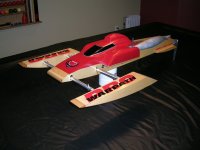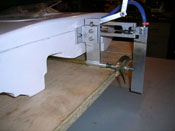
A good setup board is a must-have for the serious boater...
Whether you are a sport boater or a racer, if you are serious about getting the best possible performance out of your boats, a good setup board (or table) is a must-have item. The only accurate way to setup struts, drives, rudders and even turn fins is in relation to the boats ride surface. You site the boat on a perfectly flat surface and then you can take measurements in relation to this surface. Adjusting things such as drive or strut angle is just guesswork unless you have a good foundation to work on.
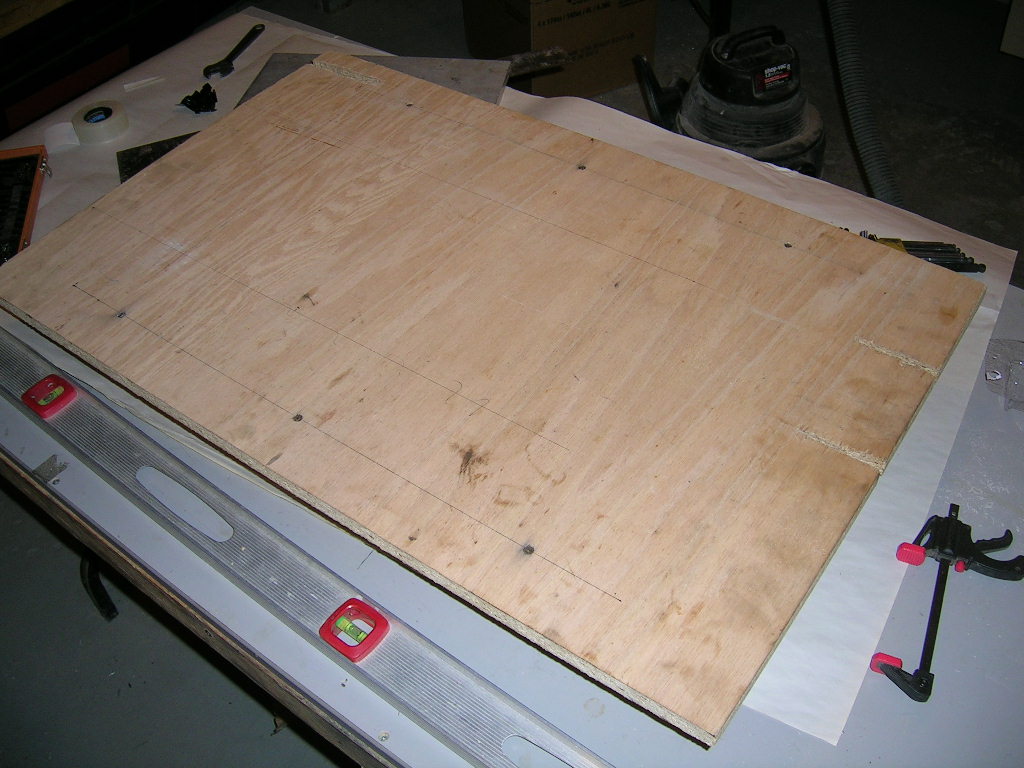 Since most of us travel with foldable tables to save space in our vehicles or trailers, a good solid setup board is the simplest way to ensure we have a perfectly flat surface for making adjustments to our boats once at the pond. In the past I used a reinforced wood table for this but it took up a lot of space in my trailer and was pretty heavy to lug around. I have since switched to lightweight foldable tables and instead made myself a compact yet very sturdy setup board. I have been using this for the past year or so and can honestly say it has become one of the most important items in my trailer.
Since most of us travel with foldable tables to save space in our vehicles or trailers, a good solid setup board is the simplest way to ensure we have a perfectly flat surface for making adjustments to our boats once at the pond. In the past I used a reinforced wood table for this but it took up a lot of space in my trailer and was pretty heavy to lug around. I have since switched to lightweight foldable tables and instead made myself a compact yet very sturdy setup board. I have been using this for the past year or so and can honestly say it has become one of the most important items in my trailer.This article is to demonstrate how easy it is to make such a setup table. In the end you will wonder how you ever did without one if you have never used one!
I made my table from a piece of scrap 3/4" thick oak veneer sheeted particle board. This is overkill in the sense that you do not
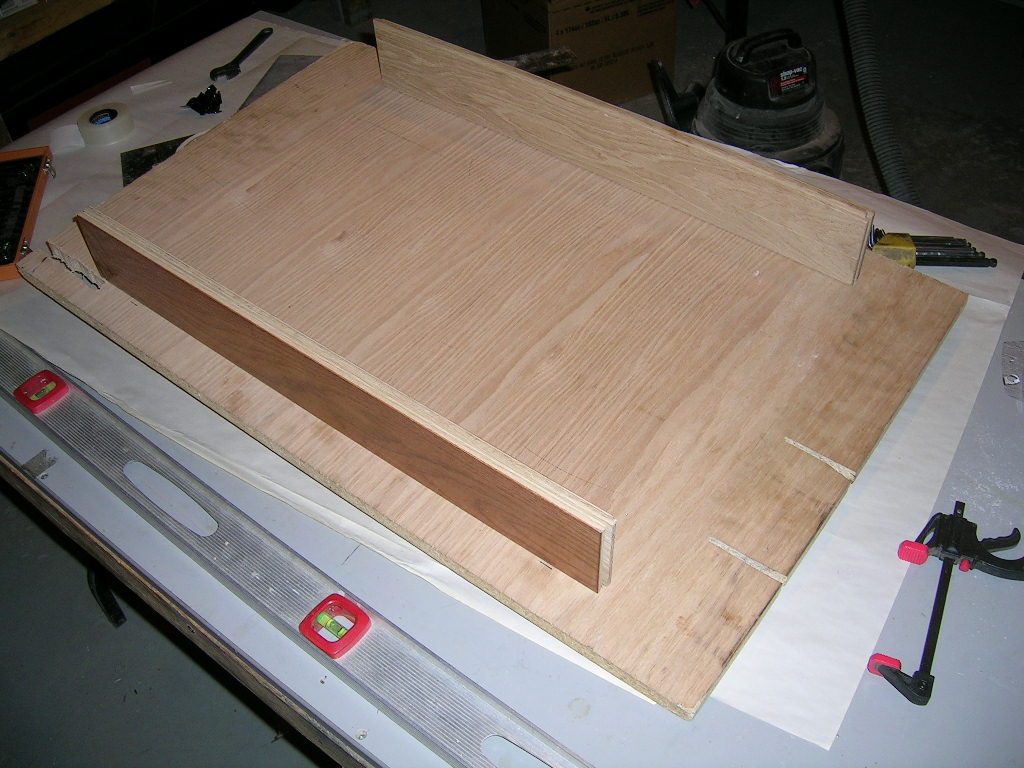 have to use such expensive material to make your setup board, but that is what I had laying around at the time so I used it. A good piece of melamine shelving will do fine and can be purchased at most home renovation or hardware stores at fairly low cost. I recommend at least 1/2" thick. The important thing to look for is that the board is straight and the surface even.
have to use such expensive material to make your setup board, but that is what I had laying around at the time so I used it. A good piece of melamine shelving will do fine and can be purchased at most home renovation or hardware stores at fairly low cost. I recommend at least 1/2" thick. The important thing to look for is that the board is straight and the surface even. To ensure my board stay straight in the long run, I ran a couple pieces of oak (3/4" thick x 4" wide oak flooring boards) on the planer to get them perfectly straight and screwed them upright on the underside of the board. I also used waterproof glue in addition to the screws. This makes the board extremely rigid and will prevent it from sagging over time.
I also cut a few slots in the board at one end to allow for rudders and skeggs to fit through the bottom of the board. This is especially handy when setting up cats or hydros. When setting up hydros, if the turn fin is on the outer edge of the sponson you can simply let it hang off the side of the board while still having both sponsons flat on the board. If the turn fin is on the inner edge of the sponson (as with many riggers) then it will have to be removed to get the boat to sit flat on the board. Another option is to cut a large enough slot in the board for the turn fin to fit into, in which case you never have to remove the turn fin. I have added this slot to my setup board.
The dimensions of my board are 20" x 32". So far this has worked out well with all of my boats. I can squeeze it in a corner in my trailer and it takes up very little space.
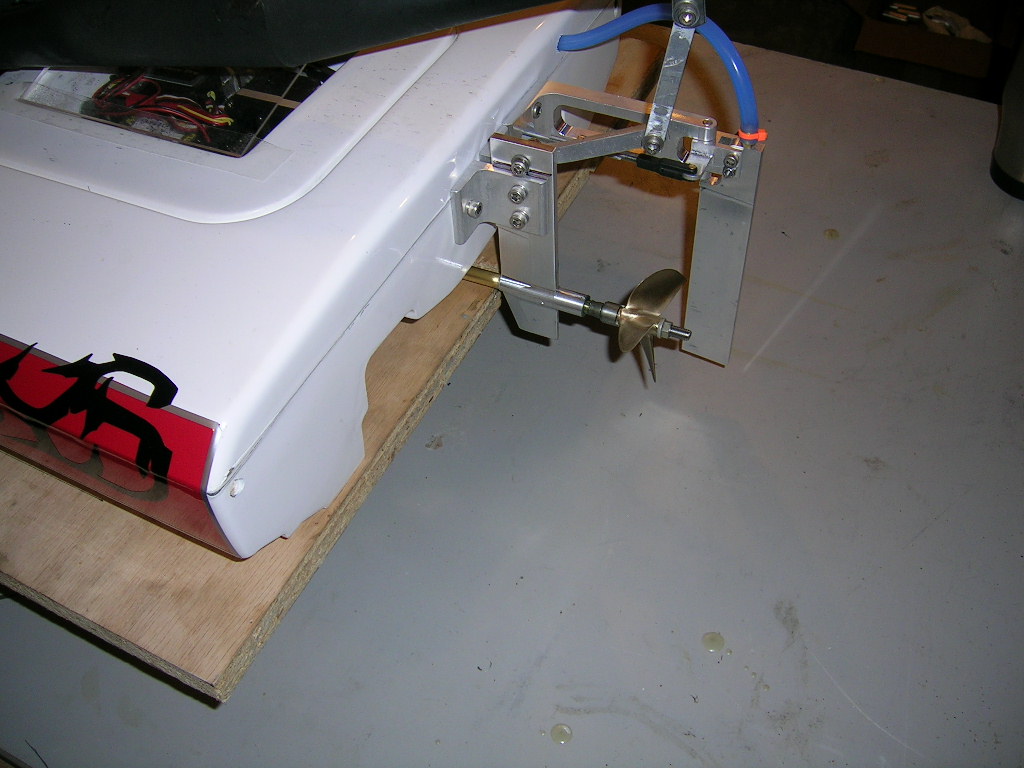
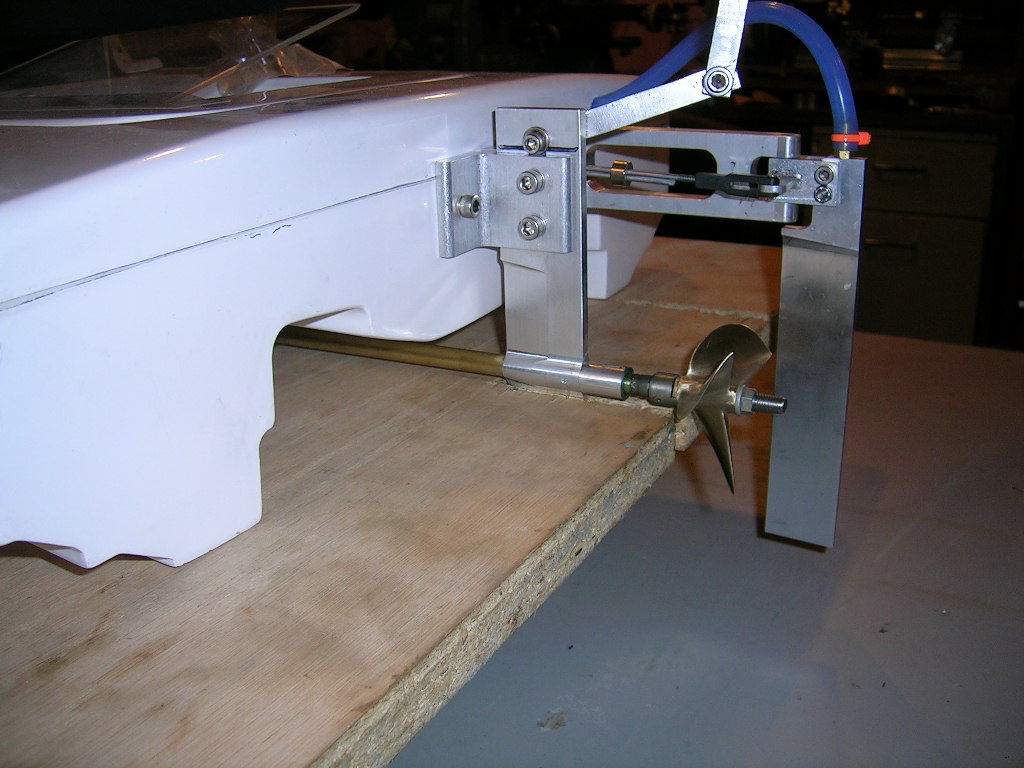
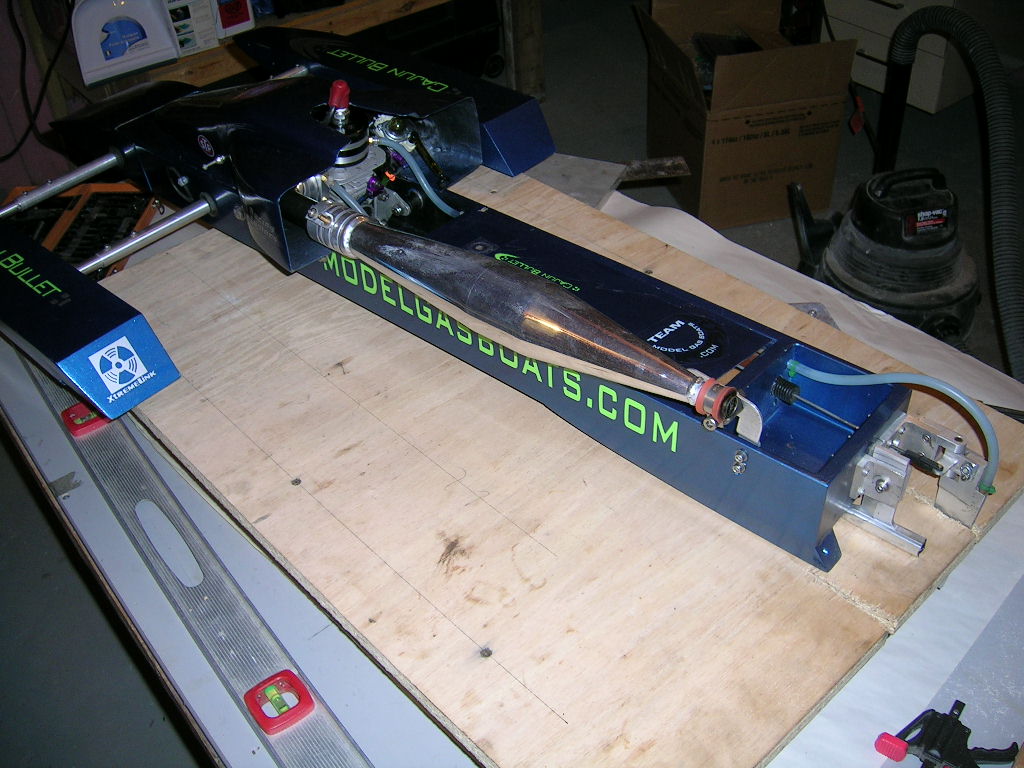
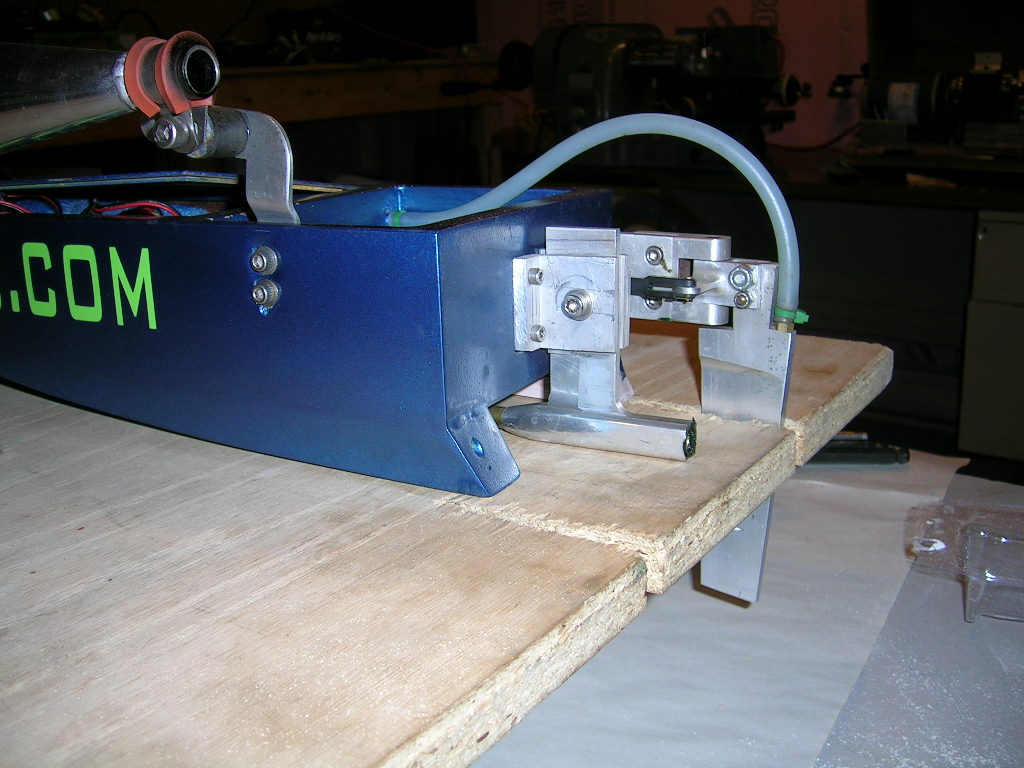
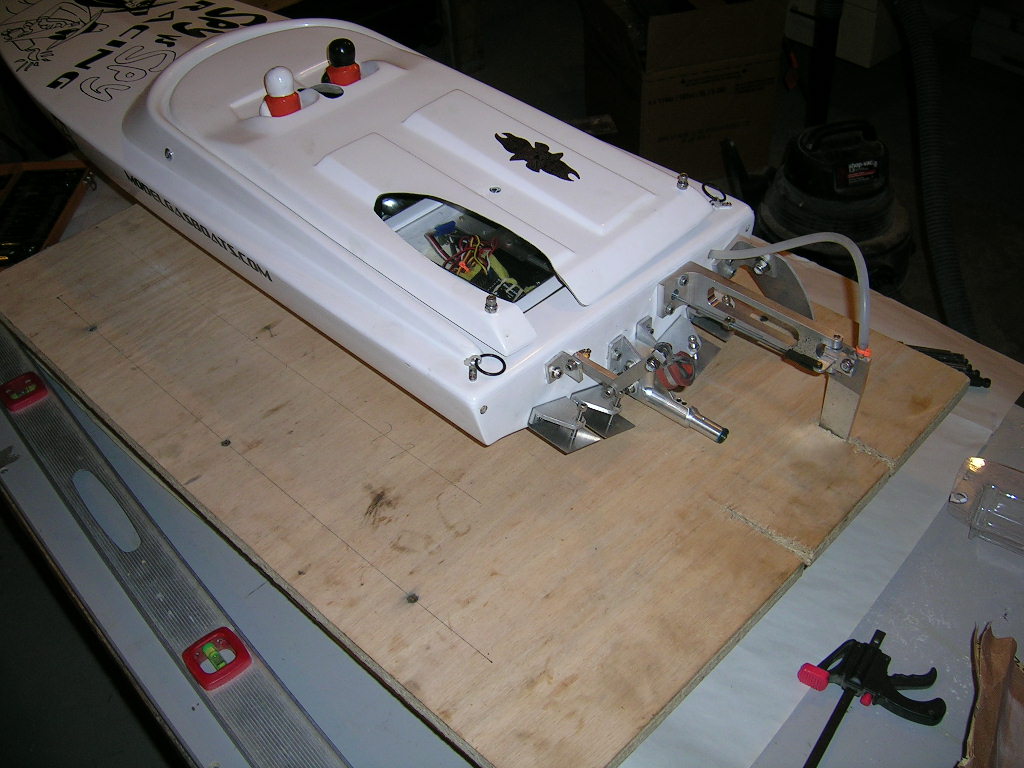
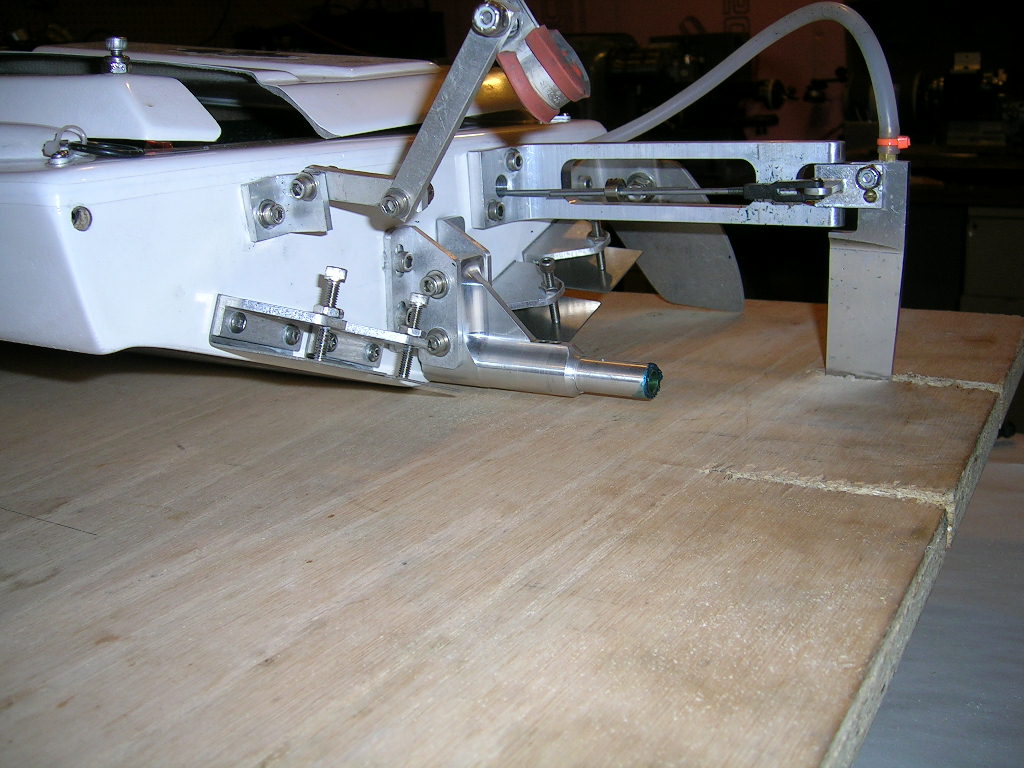
The nice thing about having a sturdy setup board is that you can use it just about anywhere and do accurate adjustments to your boats. It really doesn't matter if the table it is sitting on is sagging or not, you know the boar is flat and accurate!
Happy Boating!


